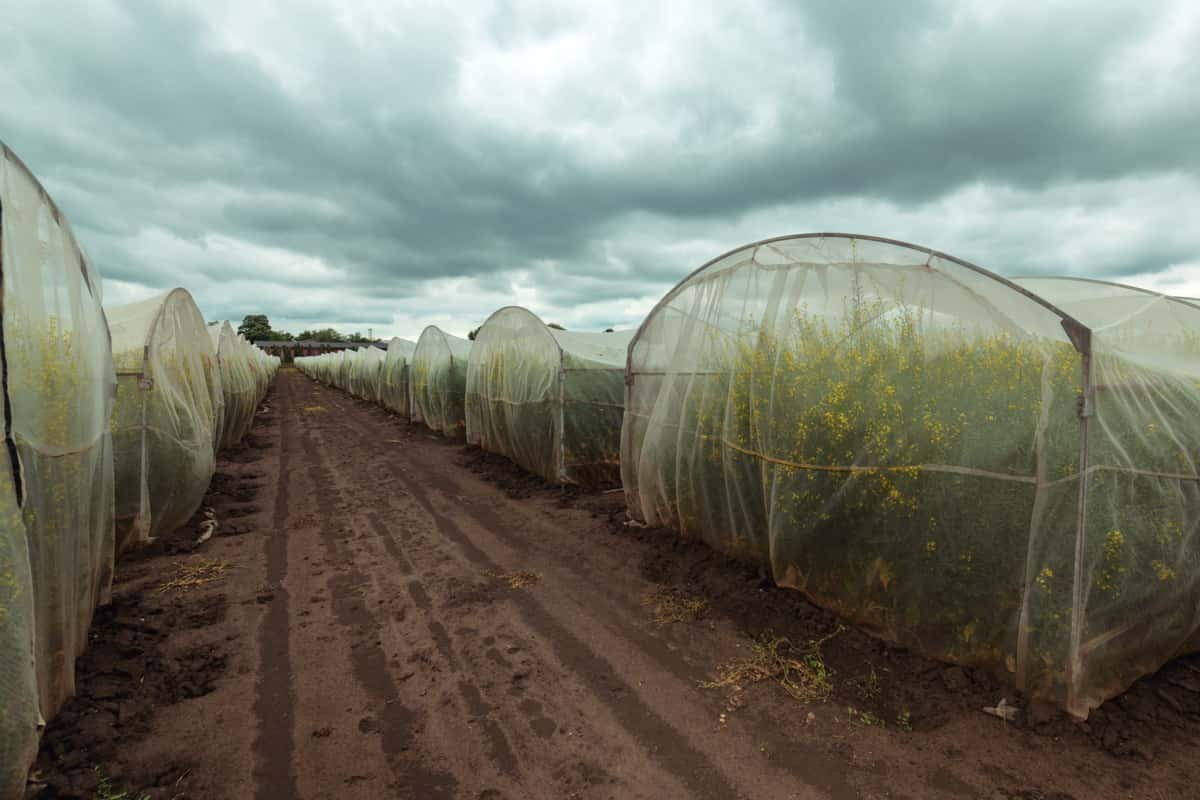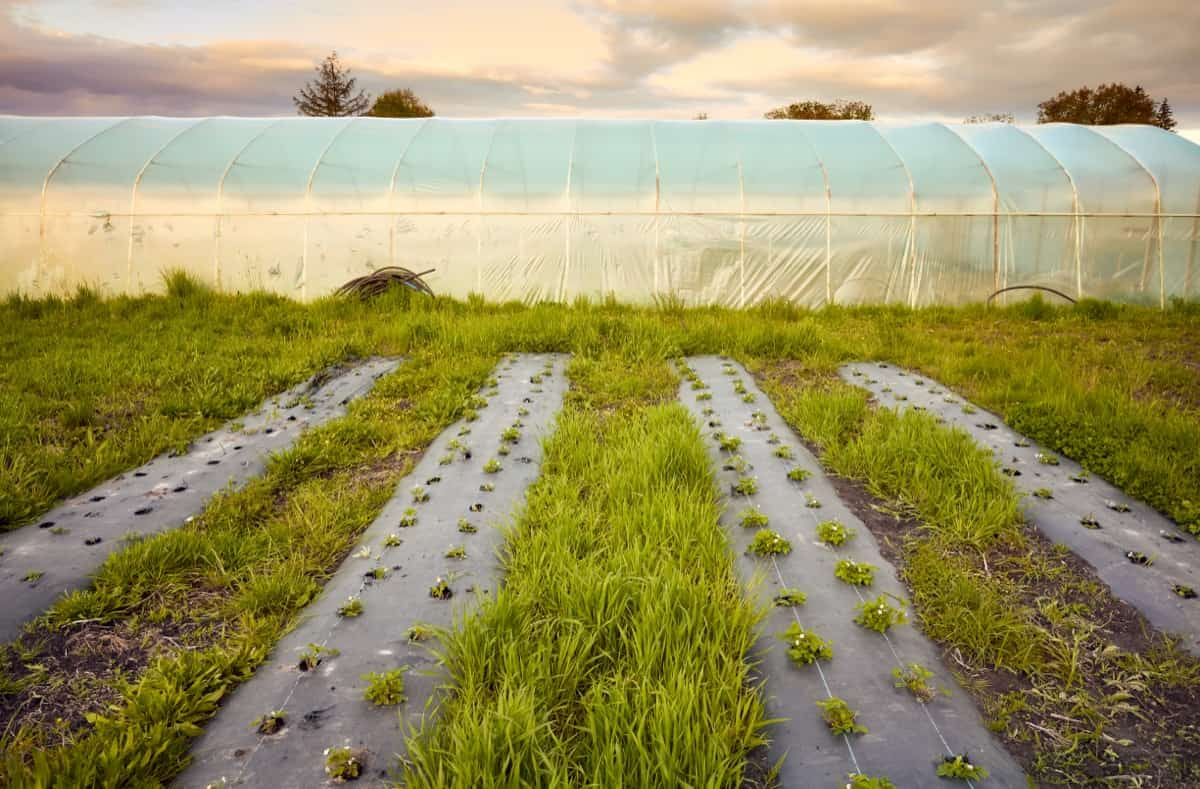As the temperatures rise, keeping your plants healthy and thriving becomes more challenging. High heat can cause plants to wilt, dry out, or even die, especially if they are growing in outdoor areas such as a terrace or garden. Fortunately, you can take steps to protect your plants from high heat. This article will discuss the top 10 tips to protect your plants from high heat, with separate steps for terrace and outdoor gardening.
Top 5 Tips to Protect Your Plants from High Heat: Terrace
Choose the Right Plants
When selecting plants for your terrace garden, choose plants that can withstand high heat and direct sunlight. Succulents, cacti, and other desert plants are excellent choices as they have adapted to survive in hot, dry environments. Additionally, herbs like thyme, rosemary, and basil, commonly used in cooking, can tolerate heating well.
Use Shade Cloth
In case you missed it: A Guide to Using Vermiculite in Your Garden

To provide your plants with shade, consider using shade cloth. This special material can be draped over your terrace, creating a shaded area for your plants. Shade cloth can reduce the amount of direct sunlight your plants receive, which can help prevent them from drying out.
Water Regularly
Watering your plants on a consistent basis is one of the best ways to keep them alive and thriving in hot temperatures. When temperatures rise, plants lose water more quickly, so keeping the soil moist is essential. Water your plants early or late afternoon when temperatures are cooler to prevent evaporation. Also, ensure to water the soil, not the leaves, as wet leaves can lead to sunburn.
Mulch the Soil
Mulching is another effective way to protect your plants from high heat. Mulch is a layer of organic material spread over the soil, helping retain moisture and regulate soil temperature. Mulch the ground surrounding your plants, but avoid putting any mulch on top of the stems or leaves. Mulch can also help prevent weeds from growing around your plants.
In case you missed it: A Guide to Agriculture Mulching Sheets: Types and Best Practices for Usage

Use a Trellis or Support System
If you have climbing plants, consider using a trellis or support system to keep them off the ground. This can help prevent the plants from drying out and can also increase air circulation around the leaves. A trellis can also shade the plant’s base, reducing the direct sunlight it receives.
Top 10 Tips to Protect Your Plants from High Heat: Outdoor
Water Deeply and Less Frequently
When it comes to outdoor gardening, watering your plants deeply and less frequently is important. This means giving your plants a good soak, allowing the water to penetrate the soil deeply. This can help the roots grow deeper, making the plants more resilient to drought and high temperatures. Avoid watering your plants too often, as this can lead to shallow root systems that are more susceptible to heat stress.
Use Drip Irrigation
Drip irrigation is an excellent way to water your outdoor plants while conserving water. This system uses tubes or hoses with small holes to deliver water directly to the plant’s roots, reducing evaporation and waste. Drip irrigation can also help keep the soil moist without saturating it, which can lead to root rot.
In case you missed it: A Guide to Using Water-Soluble Fertilizers: Maximizing Your Garden’s Potential

Apply Mulch
As with terrace gardening, mulching is an effective way to protect your outdoor plants from high heat. Mulch the base of your plants without covering the stems or foliage. This can help retain moisture in the soil and regulate soil temperature, keeping your plants cool and healthy.
Provide Shade
If your plants are in an area with direct sunlight, consider providing them with shade. This can be done using shade cloth or by planting taller plants around the perimeter of your garden. You can also use shade sails, which are large pieces of fabric anchored to posts or trees to create a shaded area. This can help prevent your plants from drying out and reduce the temperature in your garden.
Plant at the Right Time
Planting at the right time protects your outdoor plants from high heat. Planting in the cooler months, such as spring and fall, can give your plants time to establish themselves before the hot summer months. If you must plant in the summer, consider planting in the early morning or late afternoon when temperatures are cooler.
Choose Heat-Tolerant Plants
Choosing plants that can tolerate high heat is essential for outdoor gardening. Heat-tolerant plants include succulents, cacti, other desert plants, and herbs like thyme, rosemary, and oregano. It’s also a good idea to choose native plants adapted to your local climate and soil conditions.
Prune Regularly
Regular pruning can help protect your outdoor plants from high heat. By allowing more air to flow around the leaves, pruning helps reduce the likelihood of fungal diseases. It can also help remove dead or damaged branches, which can be a source of stress for the plant.
Fertilize Appropriately
Fertilizing your outdoor plants appropriately can help them withstand high heat. Over-fertilizing can lead to excessive growth, making the plant more susceptible to heat stress. On the other hand, under-fertilizing can lead to nutrient deficiencies, weakening the plant. It’s important to fertilize according to the plant’s needs and follow the fertilizer package’s instructions.
Use Windbreaks
Windbreaks can be an effective way to protect your outdoor plants from high heat. Wind can increase evaporation and reduce soil moisture, making it harder for plants to withstand high temperatures. Using a windbreak, such as a fence or a hedge, can help reduce the impact of wind on your plants, keeping them cooler and more hydrated.
Monitor your Plants
Finally, monitoring your plants regularly for signs of stress or damage is important. Look for wilting leaves, brown patches, or yellowing leaves, which can be signs of heat stress or disease. If you notice any issues, take action immediately to address the problem.
Conclusion
Protecting your plants from high heat is essential for maintaining a healthy and thriving garden. Whether gardening on a terrace or in an outdoor space, you can take steps to protect your plants from heat stress. Choosing the right plants, providing shade, watering regularly, and applying mulch are just a few ways to keep your plants cool and healthy in the hot summer months. By following these tips, you can enjoy a beautiful and productive garden all year round.
- Feed Your Flock for Less: Top 10 Tips to Save on Chicken Feed
- Ultimate Guide to Ossabaw Island Hog: Breeding, Raising, Diet, and Care
- Hatching Answers: The Top 10 Reasons Your Chickens Aren’t Laying Eggs
- Eggs and Economics: Breaking Down the Cost of Raising Backyard Chickens
- Defend Your Greens: Proven Methods to Keep Iguanas Out of Your Garden
- Ultimate Guide to Cinnamon Queen Chicken: A Comprehensive Guide for Beginners
- Ultimate Guide to California Tan Chicken: Breeding, Raising, Diet, Egg-Production and Care
- Ultimate Guide to Marsh Daisy Chicken: Breeding, Raising, Diet, and Care
- 10 Types of Chicken Farming Businesses You Can Start for Profits